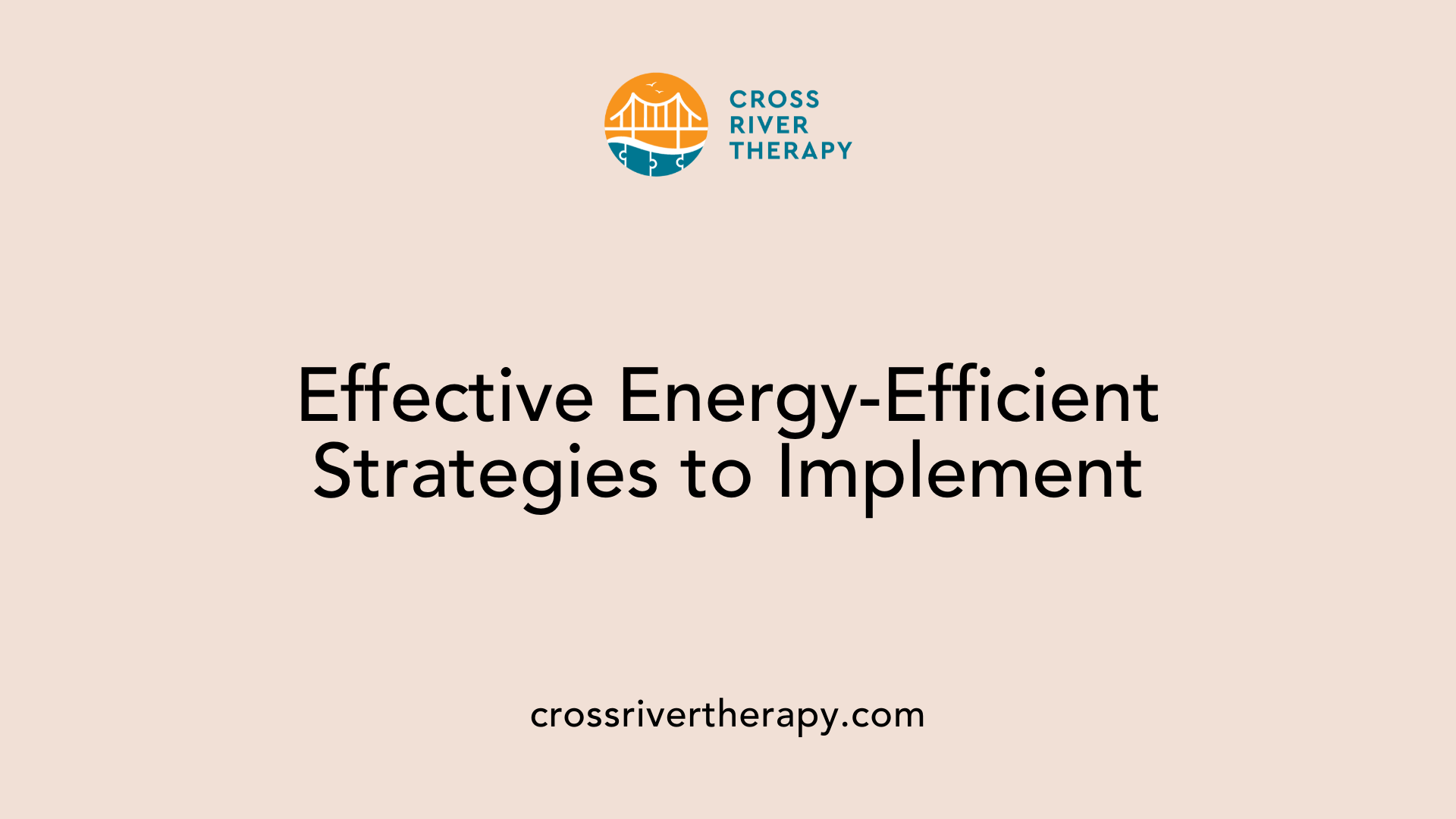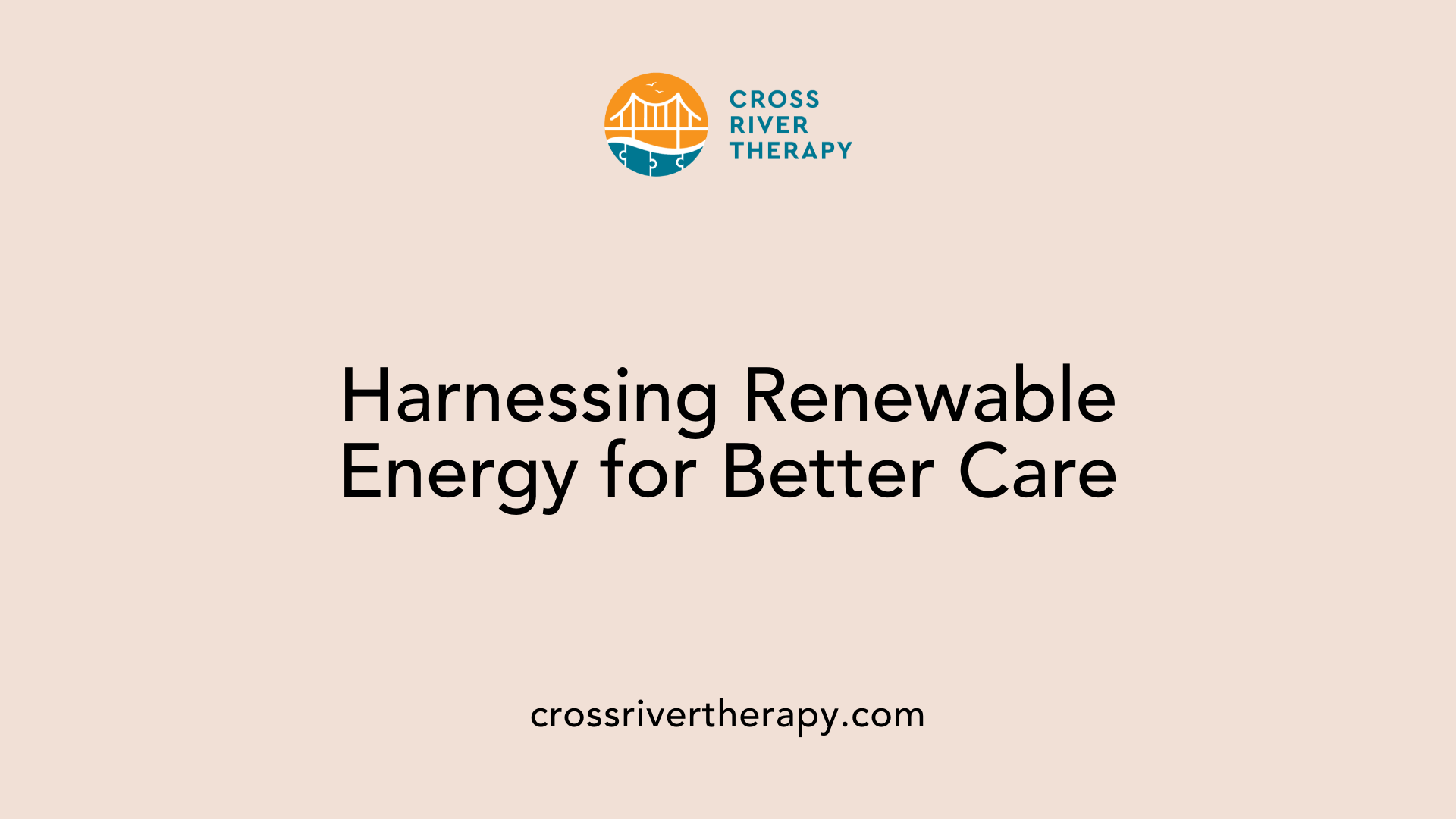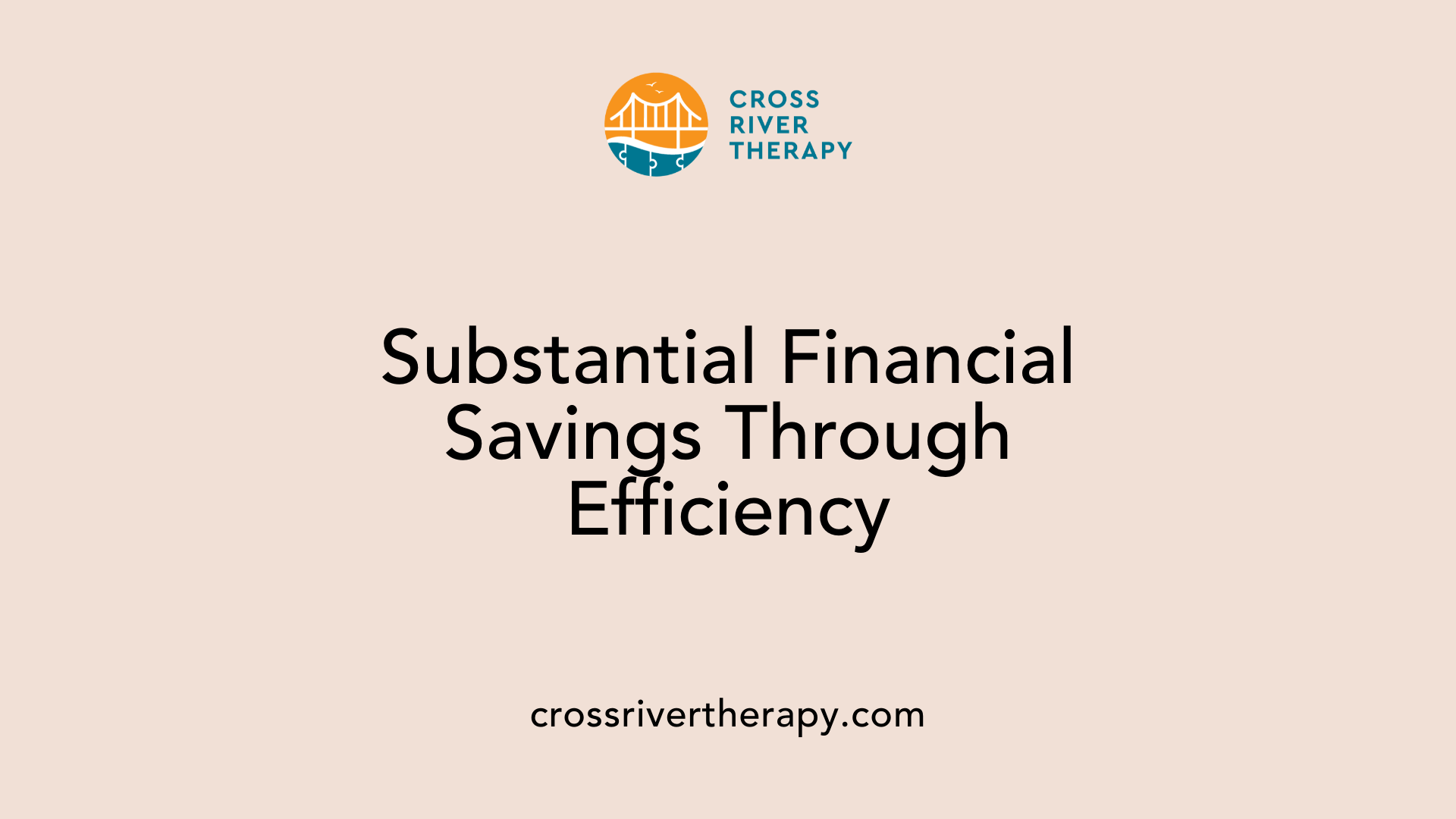Leveraging Natural Light in Autism Schools

How can autism schools and facilities improve energy efficiency?
Autism schools and facilities can significantly enhance their energy efficiency through several innovative strategies. One of the most beneficial methods is effective utilization of natural light. By maximizing daylight, schools can not only improve the mood and concentration of students but also reduce the dependency on artificial lighting, leading to reduced energy costs.
Switching to LED lighting offers another impactful solution. LED lighting can reduce energy consumption by approximately 80% compared to traditional incandescent bulbs, significantly cutting down on electricity bills. Additionally, LEDs have a longer lifespan, which minimizes maintenance costs and creates an overall more cost-effective lighting solution that benefits both the school and its students.
To further improve energy management, upgrading HVAC systems can ensure optimal climate control, making the environment more comfortable for students. Implementing smart energy management systems provides the ability to monitor and adjust energy usage effectively. These changes promote a more conducive learning atmosphere for students with autism.
How can student participation in energy conservation be implemented?
Engaging students in energy conservation practices can foster a culture of sustainability within the school. By establishing energy monitoring programs, students can take responsibility for their surroundings and become active participants in ensuring energy efficiency. This involvement not only raises awareness about environmental issues but also empowers students to contribute positively to their community.
In conclusion, through leveraging natural light, utilizing LEDs, upgrading HVAC systems, and actively involving students, autism schools can create an energy-efficient and supportive learning environment that enhances educational experiences while promoting sustainability.
Examples of Energy-Efficient Practices for Autism Care Settings

What are examples of energy-efficient practices that can be implemented in autism care settings?
Energy-efficient practices in autism care settings can significantly improve comfort while reducing costs. Here are several effective strategies:
LED Lighting
- Upgrading to LED lighting not only cuts energy consumption by up to 75% but also provides improved lighting quality, essential for reducing sensory overload in autistic individuals.
Energy-Saving Appliances
- Implementing energy-efficient appliances for cooking, refrigeration, and laundry can contribute to significant overall energy savings. These appliances are designed to consume less electricity while maintaining performance quality.
Natural Lighting
- Utilizing natural light by optimizing window placements and using light-colored interiors can reduce the dependence on artificial lighting, creating a more calming environment for individuals with autism during daytime hours.
Local Energy Partnerships
- Engaging with local energy programs can offer autism care facilities essential resources and incentives for upgrading systems. These partnerships often provide guidance for accessing grants or rebates that facilitate the transition to more energy-efficient technologies.
By incorporating these strategies, autism care settings can enhance operational efficiency and foster a more supportive environment conducive to learning and well-being.
The Role of Renewable Energy in Autism Facilities

What role does renewable energy play in enhancing autism support facilities?
Renewable energy plays a crucial role in enhancing autism support facilities by reducing utility costs and increasing operational efficiency. Implementing solar energy systems, for example, not only lowers energy bills but also contributes to a cleaner environment by reducing emissions. These cost savings can then be redirected into programs and services that directly benefit individuals with autism, further enhancing the quality of care.
Benefits of Solar Energy Systems
- Utility Cost Reduction: Solar panels can lower electricity costs significantly, with facilities potentially saving between $20,000 and $30,000 annually. This financial relief allows more funding for autism-related therapies and support.
- Environmental Impact: By transitioning to solar energy, facilities can reduce their carbon emissions by up to 50%, fostering a healthier environment for individuals with autism who may be sensitive to pollutants.
Enhancing Care Quality
- Improved Indoor Quality: Renewable energy contributes to better indoor air quality, crucial for individuals with autism. Clean, well-regulated environments help mitigate respiratory issues, which in turn enhances comfort and well-being.
- Sustainable Practices: The integration of renewable energy systems aligns with sustainable practices that cater to the unique sensory needs of autistic individuals, creating tranquil and distraction-free environments conducive to learning and development.
The strategic adoption of renewable energy solutions equips autism facilities to offer improved care while promoting sustainability and financial efficiency, ultimately benefiting the quality of life for individuals with autism.
Financial Advantages of Energy Efficiency in Autism Facilities

How can energy-efficient solutions contribute to financial savings?
Energy-efficient solutions can lead to substantial financial savings for autism facilities. By integrating environmentally friendly practices and technologies, such as LED lighting and energy-efficient HVAC systems, facilities can reduce average monthly utility costs by 20-40%. Over a span of 20 years, this translates into potential savings between $20,000 and $40,000.
These cost reductions are particularly significant for autism facilities, where every dollar saved can be redirected towards educational and therapeutic services, enhancing support for individuals with autism.
Reinvestment of savings
The financial savings generated from adopting energy-efficient solutions allow facilities to allocate more funds towards vital programs. This might include enhanced training for staff, improved educational materials, or development of support programs tailored to the needs of individuals on the autism spectrum. Ultimately, the goal is to create a nurturing environment that fosters improved learning outcomes and overall well-being.
Financial incentives
To further mitigate costs associated with the initial investment in energy-efficient technologies, financial incentives such as tax credits and grants are available in many regions. These incentives not only enhance the feasibility of transitioning to renewable energy sources but also contribute to the long-term financial stability of autism facilities by decreasing reliance on traditional energy costs. Thus, energy efficiency not only helps in sustainability efforts but significantly eases the financial burden on autism care services, enabling them to thrive.
Design Considerations for Energy-Efficient Autism Environments

What are crucial design elements for energy-efficient autism environments?
Crucial design elements for energy-efficient autism environments include effective insulation and soundproofing. These features enhance thermal comfort and reduce noise, which is essential for minimizing sensory overload experienced by many autistic individuals. By preventing heat loss during colder months and maintaining cooler indoor temperatures during warmer seasons, insulation ensures a comfortable living and learning environment.
Lighting Solutions
Incorporating energy-efficient lighting solutions such as LED bulbs is vital. LEDs consume up to 80% less energy compared to traditional incandescent bulbs, helping to create a calming atmosphere. Their customizable options allow facilities to adapt lighting based on the needs of individuals with autism, reducing overstimulation, enhancing mood, and promoting better focus.
Comfort and Sensory Support
Comfort and sensory support can be significantly improved through thoughtful design choices. Areas can be designed with soft textures, adjustable lighting, and soundproofing elements that cater to sensory sensitivities. Integrating natural light while strategically minimizing harsh artificial lights can lead to better concentration and reduced anxiety levels, essential for therapeutic effectiveness.
Implementing these design strategies not only fosters a supportive atmosphere for individuals with autism but also promotes energy efficiency, showcasing a holistic approach to care.
Technological Integration for Energy Efficiency
How do smart technologies support energy efficiency in autism facilities?
Smart technologies, including smart thermostats and energy management systems, significantly enhance energy efficiency in autism support facilities. These technologies come equipped with programmable options that allow users to manage heating, cooling, and lighting based on real-time data and individual needs.
By providing adaptive control over environmental conditions, smart technology helps maintain stable indoor climates. This stability is essential for individuals with autism, as it can minimize sensory stress caused by fluctuating temperatures or uncomfortable lighting.
Benefits of Smart Thermostats
- Programmable Settings: Smart thermostats allow for customized heating or cooling schedules, aligning with the daily routines of residents and staff.
- Energy Savings: By optimizing energy consumption, facilities can reduce their overall utility costs, channeling available funds into vital autism support programs.
- Remote Control: Users can manage their settings remotely, adding convenience and ensuring comfort for individuals with sensory sensitivities.
Energy Management Systems**
These systems monitor energy use in real-time, allowing facilities to identify inefficiencies and adjust accordingly. This proactive approach further enhances comfort by creating a tranquil environment that caters to the sensory needs of those on the autism spectrum.
In summary, the adoption of smart technologies not only makes autism facilities more energy-efficient but also promotes environments of comfort, well-being, and stability for individuals with autism.
Case Studies: Success Stories in Sustainable Practices
What impact have energy efficiency and renewable energy had on autism facilities?
Implementing energy efficiency and renewable energy strategies in autism facilities has led to significant improvements in both operational efficiency and quality of life for individuals with autism. Institutions have reported reductions in energy costs by up to 50%, leading to greater financial resources for support services. Enhanced air quality and more stable environments have also contributed to better health and comfort, demonstrating the comprehensive benefits of these sustainable practices.
Examples of implemented solutions
Recent case studies highlight several successful initiatives:
- Solar Energy Installation: Many autism schools have integrated solar panels, leading to savings of $20,000 to $30,000 annually in utility costs.
- LED Lighting Upgrade: Facilities that switched to LED lighting saw up to 90% reduction in energy consumption, improving academic performance and comfort by reducing sensory strain.
- Smart Technologies: Some centers now utilize smart thermostats to optimize indoor climates, further enhancing sensory-friendly environments.
Impact on quality of life
These eco-friendly practices not only lighten financial burdens but also improve the overall atmosphere:
- Health Benefits: Improved air quality has led to better respiratory health among individuals with autism, crucial for their well-being.
- Reduced Overstimulation: Quiet zones and calming lights help mitigate sensory overload, supporting learning and relaxation.
Community solar programs have encouraged families to engage in sustainable practices, collectively reducing energy costs. Schools have also initiated educational initiatives to promote environmental stewardship, creating an informed community committed to fostering supportive environments for individuals with autism.
Overall, these case studies illustrate the transformative power of energy efficiency and renewable energy in autism facilities, showcasing a path toward improved health, comfort, and sustainability for everyone involved.
Sensory-Friendly Environments Through Green Energy
How do green energy solutions contribute to sensory-friendly environments in autism facilities?
Green energy solutions play a significant role in creating sensory-friendly environments within autism facilities. One of the foremost benefits is the improvement of air quality. By integrating renewable energy sources, such as solar power, facilities can reduce reliance on fossil fuels, leading to a substantial decrease in harmful emissions. This cleaner air is vital, as individuals with autism may have heightened sensitivities to pollutants, which can exacerbate various symptoms.
LED and Natural Lighting
Illumination is another crucial component. The use of LED lighting not only reduces energy consumption by up to 75% but also provides a softer light, which helps mitigate sensory overload. Unlike traditional fluorescent lights, LED fixtures offer adjustable options that can be tailored to meet the individual needs of people with autism. Additionally, maximizing natural light through well-placed windows and skylights creates a more serene learning environment, enhancing focus and comfort.
Gardens and Outdoor Spaces
Incorporating gardens and outdoor sensory paths can also serve therapeutic purposes. These green spaces promote engagement and physical activity, which are essential for mental well-being among individuals with autism. Natural settings allow individuals to interact with their environment in a calm manner, aiding in sensory regulation.
By focusing on air quality, lighting, and outdoor spaces, autism facilities can significantly improve their environments, leading to enhanced overall comfort and well-being for individuals on the spectrum.
Community involvement in autism schools' sustainable practices can be fostered through educational initiatives that teach students about renewable energy and its benefits. By incorporating lessons on sustainability into the curriculum, these schools can create future advocates for environmental stewardship.
Student education on sustainability
Integrating sustainability topics into classroom discussions allows students with autism to understand the importance of energy efficiency and sustainable practices. Hands-on projects, such as creating small solar models or participating in recycling efforts, can also engage students while teaching them valuable skills.
Parental involvement
Parental engagement is crucial for reinforcing these lessons at home. Schools can organize workshops where parents learn about energy-saving techniques and the financial benefits of sustainable practices. Collaborating with parents in sustainability projects, such as school gardens or energy-efficient renovations, can enhance the community's overall involvement.
Implementing community solar projects encourages collective participation, allowing families to share the benefits of renewable energy without significant upfront costs. These initiatives can unite families around common goals, improve financial stability, and promote environmental consciousness, while also providing real-world examples of sustainability in action.
Overall, fostering community engagement in autism schools not only enhances sustainability efforts but also builds a stronger, more connected environment for students, families, and the broader community.
Utilizing Financial Incentives for Renewable Energy Projects
Government Programs
Several government-backed programs are designed to encourage the adoption of renewable energy solutions. These initiatives aim to support autism facilities in transitioning to sustainable practices, ensuring that facilities can benefit from both environmental sustainability and cost savings. Programs often provide grants, low-interest loans, and direct funding based on energy consumption needs.
Tax Credits
Tax incentives are another vital resource for autism facilities considering renewable energy projects. Many regions offer tax credits for installations of solar panels, wind turbines, and energy-efficient technologies. These credits can alleviate the financial burden associated with initial investments, allowing facilities to redirect saved funds towards educational programming and therapeutic services for autistic individuals.
Investment Returns
Transitioning to renewable energy not only provides immediate financial relief but also promises long-term benefits. Facilities can expect a return on investment (ROI) of about 5-7 years through energy savings and reduced operational costs. Many autism care centers report annual returns exceeding 20%, highlighting the financial viability of integrating sustainable practices.
| Incentive Type |
Details |
Potential Impact |
| Government Grants |
Low-interest loans and grants for renewable energy |
Lowers upfront investment costs |
| Tax Credits |
Incentives for installing energy-efficient solutions |
Reduces overall energy expenses |
| Long-Term ROI |
Energy savings leading to significant savings |
Enhances operational funding |
By leveraging these financial incentives, autism facilities can enhance their sustainability efforts and improve the quality of care provided.
Educational Impacts of Sustainable Practices
Green Energy Benefits on Learning
Adopting sustainable energy solutions in educational settings, particularly those catering to individuals with autism, can significantly enhance the learning experience. For instance, solar and wind energy not only lower operational costs but also provide stable energy sources that contribute to calmer environments. This stability leads to a reduction in sensory overload, enabling students to focus better on their studies.
Health Improvements
Implementing energy-efficient designs, such as LED lighting and effective insulation, plays a vital role in promoting health within educational facilities. Better air quality and reduced noise pollution create a healthier atmosphere, reducing exposure to pollutants that may exacerbate symptoms in students with autism. Enhanced indoor environments also lead to improved attendance and participation, which are crucial for effective learning outcomes.
Environmental Education
Integrating renewable energy into school curricula fosters a culture of sustainability among students. By engaging them in eco-friendly practices, schools not only improve their environments but also instill values of environmental stewardship. Programs that involve outdoor learning environments, such as gardens and sensory paths, further enrich students' experiences, providing therapeutic benefits that support emotional regulation and engagement.
| Topic |
Benefits |
Impact on Students |
| Green Energy in Classes |
Enhanced learning environments |
Focus improvement |
| Health Improvements |
Better air quality |
Increased attendance |
| Environmental Education |
Awareness of sustainability practices |
Development of eco-conscious habits |
Long-term Sustainability Goals for Autism Facilities
Operational Independence
Achieving operational independence is a significant goal for autism facilities through the integration of renewable energy sources such as solar and wind. These resources create a stable energy supply, reducing dependence on traditional power grids. By producing their own energy, these facilities can forecast and manage energy costs more effectively, which is crucial given the financial challenges often faced by autism support services.
Reducing the carbon footprint is another essential sustainability goal. The adoption of solar panels and other renewable energy technologies can lead to significant decreases in greenhouse gas emissions, often between 30% to 50%. By lowering emissions, autism facilities not only contribute to global sustainability efforts but also enhance the health of their environments, aiding individuals with autism who may be sensitive to air quality issues.
Future-proofing through Technology
Future-proofing is achieved by integrating advanced technologies such as smart thermostats and energy-efficient lighting systems. These features not only optimize energy use but also create customizable environments that cater to the sensory needs of individuals with autism. Technologies that enhance energy efficiency ensure that facilities can adapt to future energy demands while remaining financially viable.
Building Autism-Friendly Spaces with Energy Efficiency in Mind
How Does Universal Design Play a Role?
Universal design is crucial in creating environments that accommodate the diverse needs of individuals with autism. This approach ensures accessibility and comfort by integrating flexible layouts and sensory-friendly elements. By incorporating adjustable seating and safe areas, these spaces can better support learning and relaxation.
What Are the Benefits of Eco-Friendly Materials?
Utilizing eco-friendly materials enhances both the health and comfort of autism-friendly spaces. For instance, non-toxic paints and sustainable building materials contribute to better indoor air quality, reducing harmful emissions. Additionally, noise-reducing materials can decrease auditory overstimulation, creating a peaceful learning environment.
How Does This Support Well-Being?
The integration of energy-efficient technologies, such as LED lighting and smart climate control, significantly enhances the well-being of those with autism. These solutions help in managing sensory sensitivities and creating calming atmospheres, vital for reducing anxiety and promoting focus. Investing in greener environments not only supports sustainability but also ensures that facilities can allocate more resources toward programs that enrich the lives of individuals with autism.
Conclusion: The Future of Energy Efficiency in Autism Education
The transition to energy-efficient practices in autism schools and facilities marks a pivotal step toward creating supportive and sustainable learning environments. By reducing costs and fostering healthier communities, these measures lay the groundwork for greater well-being among individuals with autism. Through continued innovation and community involvement, the future of autism education can be bright, sustainable, and inclusive.
References